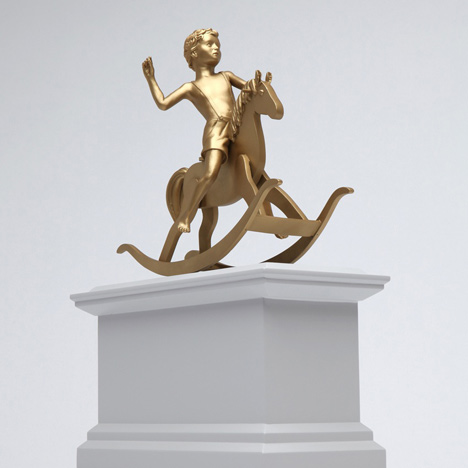
Powerless Structures, Fig.101 by Elmgreen and Dragset
This sculpture of a boy and rocking horse by Berlin artists Elmgreen and Dragset will be the next installation on top of the Fourth Plinth in London’s Trafalgar Square.
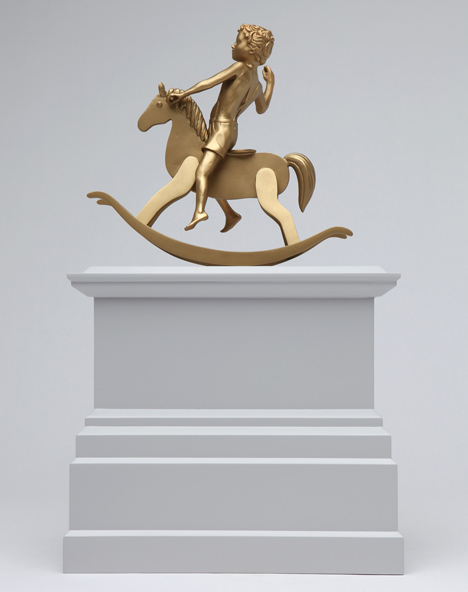
Called Powerless Structures, Fig.101, the bronze sculpture will be unveiled in 2012.
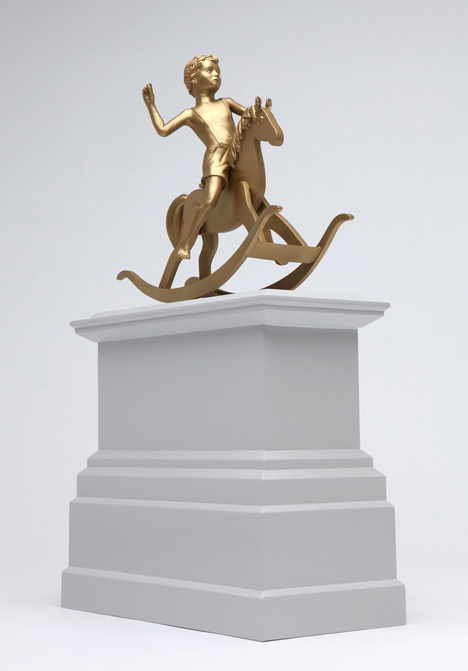
An enormous blue cockerel (below) by German artist Katharina Fritsch, called Hahn / Cock, is to be the next commission and will replace Elmgreen and Dragset's installation in 2013.
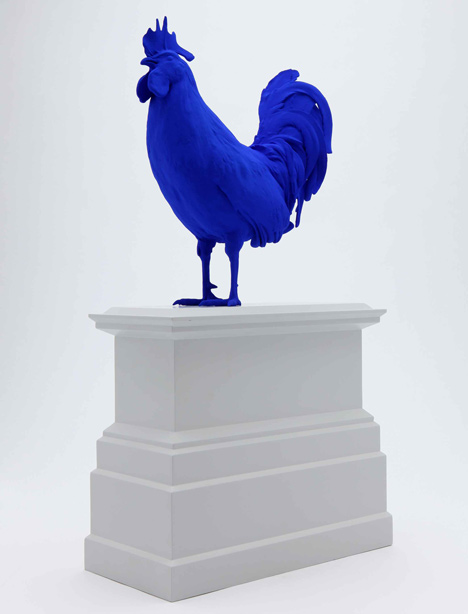
Six shortlisted proposals were exhibited at St-Martin-in-the-Fields in Trafalgar Square last year, where visitor were invited to comment via cards and the project website. See all the shortlisted proposals in our earlier story.
Here are some more details from the competition organisers:
Elmgreen and Dragset
Powerless Structures, Fig.101
Proposed material: bronze
To be unveiled in 2012
In this portrayal of a boy astride his rocking horse, a child has been elevated to the status of a historical hero, though there is not yet a history to commemorate - only a future to hope for. Elmgreen & Dragset’s work proposes a paraphrase of a traditional war monument beyond a dualistic worldview predicated on either victory or defeat. Instead of acknowledging the heroism of the powerful, Powerless Structures, Fig 101 celebrates the heroism of growing up. It is a visual statement celebrating expectation and change rather than glorifying the past.
The rocking horse, a toy originally dating from the 17th Century, and later popularised in Britain, is here depicted in a stylized version merging a Victorian model with a contemporary mass-produced design.
The boy's features and gestures underscore a character that has its own “infantile” logic, one that is not yet influenced by the classic masculine expression. As in a Hans Christian Andersen fairytale, this “enfant terrible” gently questions the authoritarian pose often found in the tradition of equestrian sculptures. His wild gesture, mimicking the adult cavalier, is one of pure excitement – there will be no tragic consequences resulting from his imaginary conquest.
Michael Elmgreen and Ingar Dragset said:
“We received the big news about having been selected for the next Fourth Plinth commission per cell phone – still jet-lagged after a long inter-continental flight – and with our hands full of shopping bags from the local supermarket. On a cold and rainy London afternoon, it took a couple of minutes for the news to sink in. Our proposal is somehow an appraisal of the “non-heroic“, so this scene actually felt rather appropriate for the situation. Though Trafalgar Square is such a prominent location and our sculpture probably will be seen by thousands of people, it is a comfort to know that it will be there only temporarily. That’s the strength and true beauty of the Fourth Plinth commissions – they are there just long enough to evoke debate, to be treasured or disliked – and then they will be exchanged with a new project, which in turn will be discussed. Such dynamics are part of keeping a city alive.”
Katharina Fritsch
Hahn / Cock
Proposed materials: steel, epoxy, paint
To be unveiled in 2013
The sculpture, a larger than life cockerel in ultramarine blue communicates on different levels. First of all is the consideration of the formal aspect of its placement: the mostly grey architecture of Trafalgar Square would receive an unexpectedly strong colour accentuation, the size and colour of the animal making the whole situation surreal or simply unusual.
The cockerel is also a symbol for regeneration, awakening and strength and at the same time plays with an animal motif that was popular in classic modernism, for example in the works of Picasso. However it is frowned upon today because it has become kitsch through overuse in the applied arts.
Katharina Fritsch said:
“It is a great honour for a German artist to get chosen for the Fourth Plinth. When I was called in my office, I got very excited because it is a great challenge for an artist to do a piece for such a worldwide important and famous place. Also to deal with the historical meaning of Trafalgar Square was very interesting for me and I wanted to do a sculpture, which is on one side serious but also humorous to give an optimistic perspective and not becoming too severe. I am very happy and I hope that people will like it.”
See also:
.
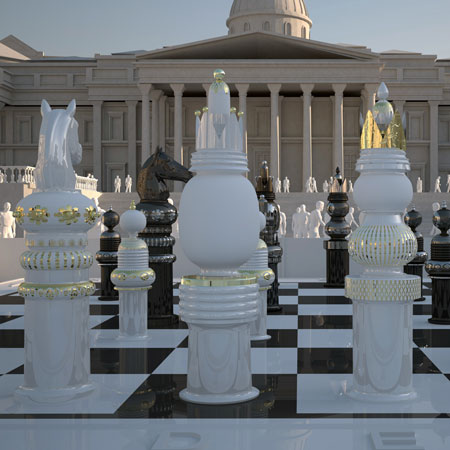 |
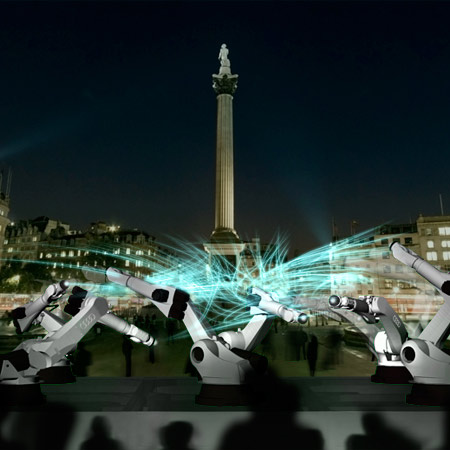 |
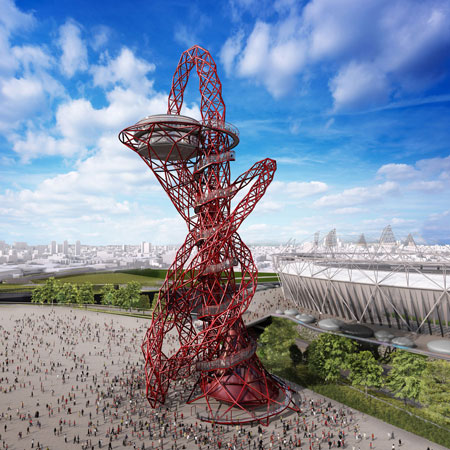 |
| The Battle of Trafalgar
by Jaime Hayón |
Outrace by Kram/Weisshaar
for Trafalgar Square |
ArcelorMittal Orbit
by Anish Kapoor |